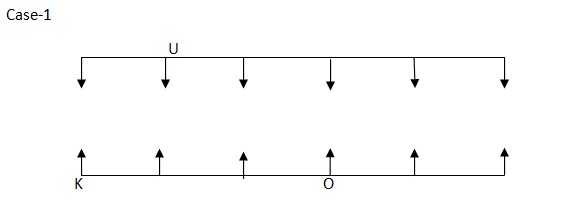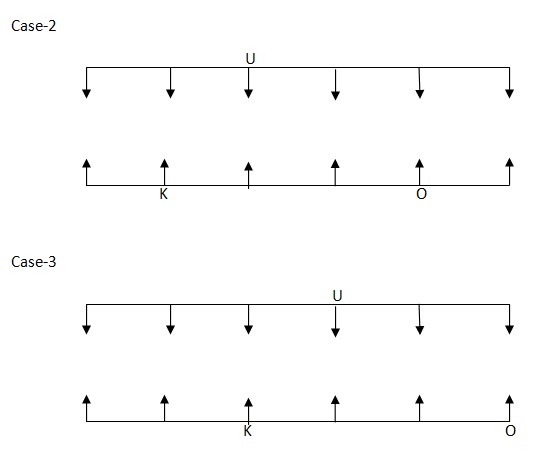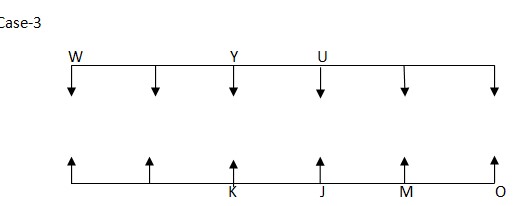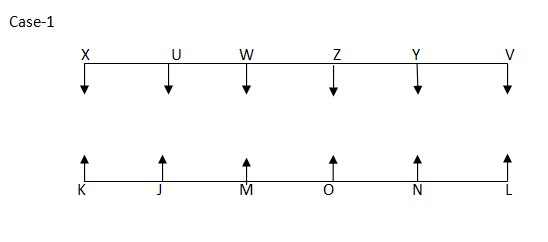Question
Who among the following pair of persons are sitting
opposite to each other? I. WM II. YN III. UM IV. VO Study the following information carefully and answer the below questions Twelve persons are sitting in a parallel row and opposite to each other. In row1- U, V, W, X, Y, and Z face the south. In row2- J, K, L, M, N and O face the north but not necessarily in the same order. U sits opposite to the one who sits second to the left of O. Only two persons sit between K and O. K sits to the left of O. The number of persons sits to the left of U is the same as the number of persons sit to the right of Y. W sits second to the right of Y. J sits immediate left of M, none of them sits at end of the row. L sits opposite to the one who sits second to the left of Z. X and Y are not immediate neighbours.Solution
We have, U sits opposite to the one who sits second to the left of O. Only two persons sit between K and O. K sits to the left of O. From the above condition, there are three possibilities. 
 Again we have, The number of persons sit to the left of U is the same as the number of persons sits to the right of Y. W sits second to the right of Y. J sits immediate left of M, none of them sits at end of the row.
Again we have, The number of persons sit to the left of U is the same as the number of persons sits to the right of Y. W sits second to the right of Y. J sits immediate left of M, none of them sits at end of the row. 
 Again we have, L sits opposite to the one who sits second to the left of Z. X and Y are not immediate neighbours. From the above condition, case2 and case3 get eliminated. Case1 shows the final arrangement.
Again we have, L sits opposite to the one who sits second to the left of Z. X and Y are not immediate neighbours. From the above condition, case2 and case3 get eliminated. Case1 shows the final arrangement. 
Which Indian state secured the top position for its tableau titled "Woman Empowerment in Viksit Bharat" in the Republic Day parade?
Brass gets discoloured in air due to the presence of which of the following gases in air?
With reference to the three types of carbon emissions from companies, consider the following pairs:
Emission �...
Who has been awarded the 2023 Kuvempu Rashtriya Puraskar?
Suppose that x and y are distinct variables that take values from (1, 2, 3, 4, 5, 6). What is the probability that the value of the expression xy+x+y is...
______ observed the World Kabaddi Day, 2024 with 128 players creating a Guinness World Record.
Which of the following is/are not a part of transfer payments?
1. Remittances received by people residing in India
2. Imported Petrochemic...
As of October 2020, Kim Jong-un is the 'Supreme Leader' of which country?
Which government honoured a distinguished percussionist named Pandit Anindo Chatterjee with the Banga Vibhushan Award in 2022?
ESOPs are now permitted for employees of CPSEs. What is a key eligibility criterion?
Relevant for Exams:


